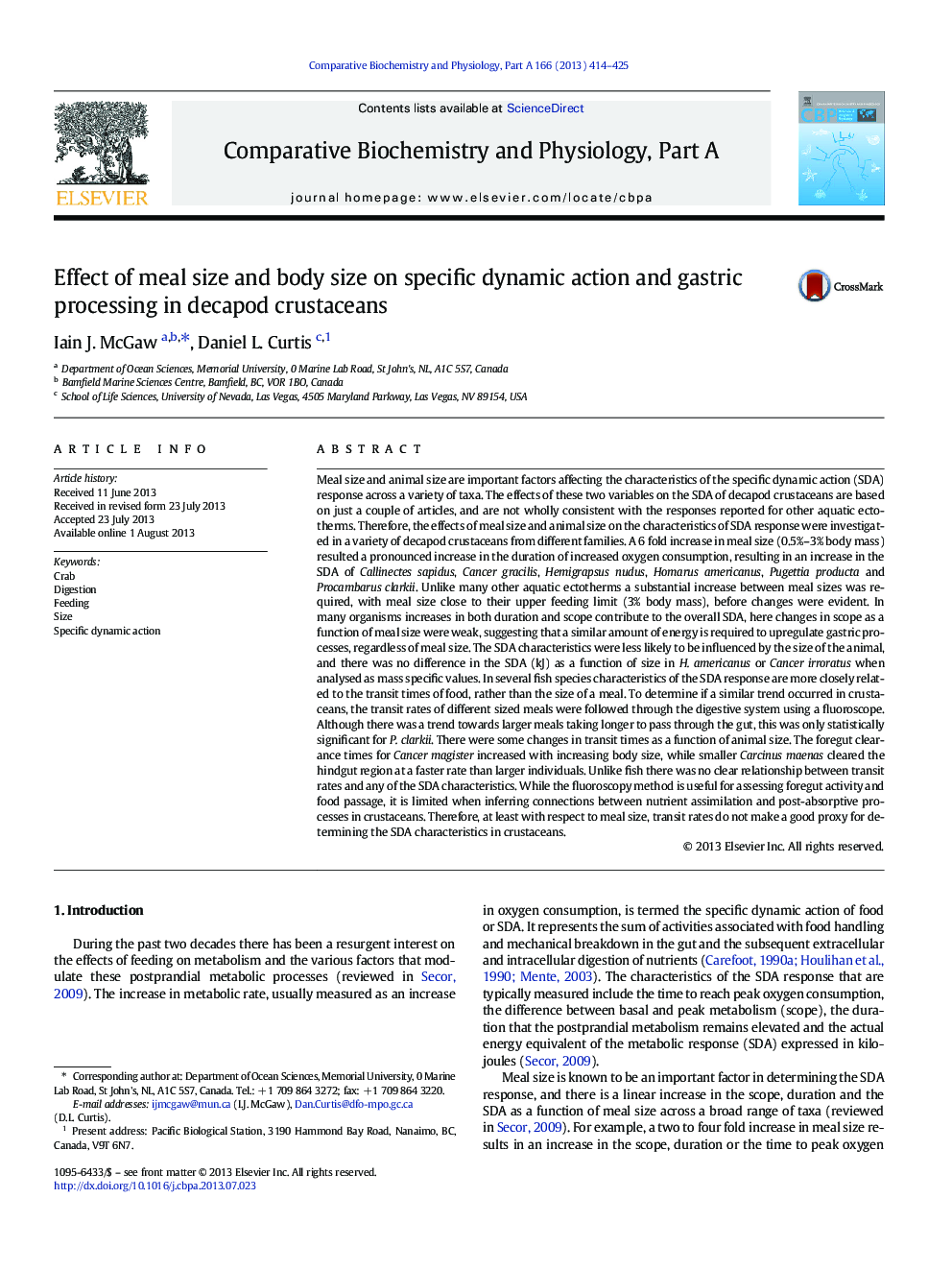| کد مقاله | کد نشریه | سال انتشار | مقاله انگلیسی | نسخه تمام متن |
|---|---|---|---|---|
| 10818832 | 1060267 | 2013 | 12 صفحه PDF | دانلود رایگان |
عنوان انگلیسی مقاله ISI
Effect of meal size and body size on specific dynamic action and gastric processing in decapod crustaceans
ترجمه فارسی عنوان
اثر اندازه و اندازه غذا بر روی فعالیت پویای خاص و پردازش معده در دشت زرشک ها
دانلود مقاله + سفارش ترجمه
دانلود مقاله ISI انگلیسی
رایگان برای ایرانیان
کلمات کلیدی
خرچنگ هضم، تغذیه، اندازه، اقدام خاص پویا
موضوعات مرتبط
علوم زیستی و بیوفناوری
بیوشیمی، ژنتیک و زیست شناسی مولکولی
زیست شیمی
چکیده انگلیسی
Meal size and animal size are important factors affecting the characteristics of the specific dynamic action (SDA) response across a variety of taxa. The effects of these two variables on the SDA of decapod crustaceans are based on just a couple of articles, and are not wholly consistent with the responses reported for other aquatic ectotherms. Therefore, the effects of meal size and animal size on the characteristics of SDA response were investigated in a variety of decapod crustaceans from different families. A 6 fold increase in meal size (0.5%-3% body mass) resulted a pronounced increase in the duration of increased oxygen consumption, resulting in an increase in the SDA of Callinectes sapidus, Cancer gracilis, Hemigrapsus nudus, Homarus americanus, Pugettia producta and Procambarus clarkii. Unlike many other aquatic ectotherms a substantial increase between meal sizes was required, with meal size close to their upper feeding limit (3% body mass), before changes were evident. In many organisms increases in both duration and scope contribute to the overall SDA, here changes in scope as a function of meal size were weak, suggesting that a similar amount of energy is required to upregulate gastric processes, regardless of meal size. The SDA characteristics were less likely to be influenced by the size of the animal, and there was no difference in the SDA (kJ) as a function of size in H. americanus or Cancer irroratus when analysed as mass specific values. In several fish species characteristics of the SDA response are more closely related to the transit times of food, rather than the size of a meal. To determine if a similar trend occurred in crustaceans, the transit rates of different sized meals were followed through the digestive system using a fluoroscope. Although there was a trend towards larger meals taking longer to pass through the gut, this was only statistically significant for P. clarkii. There were some changes in transit times as a function of animal size. The foregut clearance times for Cancer magister increased with increasing body size, while smaller Carcinus maenas cleared the hindgut region at a faster rate than larger individuals. Unlike fish there was no clear relationship between transit rates and any of the SDA characteristics. While the fluoroscopy method is useful for assessing foregut activity and food passage, it is limited when inferring connections between nutrient assimilation and post-absorptive processes in crustaceans. Therefore, at least with respect to meal size, transit rates do not make a good proxy for determining the SDA characteristics in crustaceans.
ناشر
Database: Elsevier - ScienceDirect (ساینس دایرکت)
Journal: Comparative Biochemistry and Physiology Part A: Molecular & Integrative Physiology - Volume 166, Issue 3, November 2013, Pages 414-425
Journal: Comparative Biochemistry and Physiology Part A: Molecular & Integrative Physiology - Volume 166, Issue 3, November 2013, Pages 414-425
نویسندگان
Iain J. McGaw, Daniel L. Curtis,
